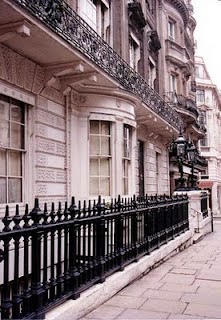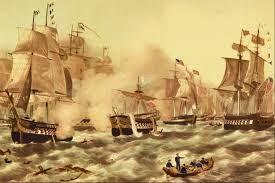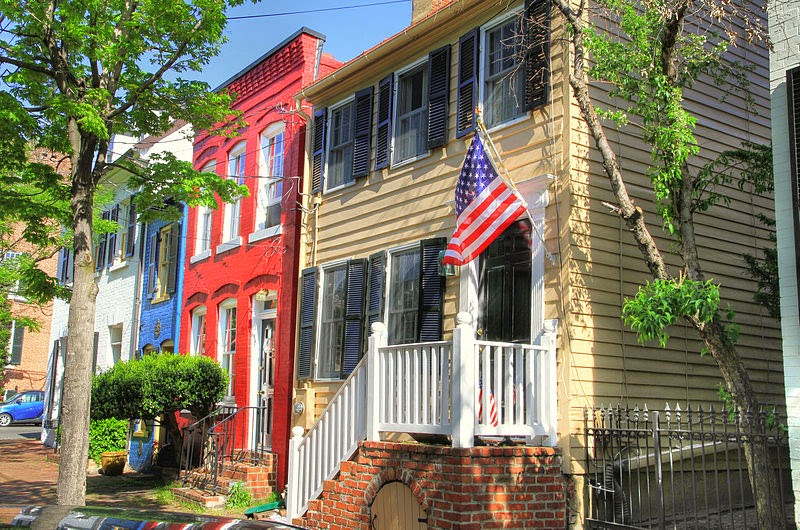Recently, we ran a post containing an essay written by film critic Roger Ebert about his memories of London during the 1960’s. Soon after, we came across this piece written by M.E. Foley that first appeared on the Anglo-American Experience Blog on February 1, 2010, about her first experience of having tea at Fortnum and Mason. We enjoyed it so much that we thought we’d share it with you – enjoy!
About ten years ago, a friend invited me to Fortnum and Mason for tea. Last week, I finally got there.
Fortnum and Mason has been a London institution for more than 300 years, since Mr Fortnum, a shopkeeper, and Mr Mason, a royal retainer with a sideline in selling off the unused lengths of candles from the palace, joined forces in the earliest 18th century. Whenever Queen Anne needed light, only a new candle would do, so Mr Mason had access to a lot of excess royal wax.
Fortnum and Mason is famous for its groceries, though the shop has other departments. But these are not run-of-the-mill groceries. The store used to have a whole department just for outfitting expeditions—by which I mean serious attempts to climb Everest, and the opening of King Tut’s tomb. Queen Victoria bought supplies for Florence Nightingale from Fortnum & Mason, and had them dispatched to Nightingale’s hospital in the Crimea.
Today it’s the kind of grocery in which you find oranges and lemons steeping in ornately curved bottles of Muscadet vinegar, or find stacks of gift hampers packed with Stilton or port. The store’s own line of marmalades includes seventeen flavours, some of which can be had in your choice of ordinary jars, ceramic crocks, or “glass amphorae”. For a mere £85 you can get 3 pounds of chocolate Easter eggs that nest, seven-deep, matryoshka-doll style. To call the marzipan fruits miniature works of art leaves me without a superlative left to describe the even-more-beautiful glacé fruits —slices of kiwi and pineapple saturated with sugar syrup, which leaves them looking as if they are about to burst with juice at the same time as they seem to be set into crystal.
And then there are the teas—too many varieties to count. Okay, a Safeway or Sainsburys will stock a lot of teas, but I don’t think they carry Jin Shang Tian Hua, sold with the leaves sewn into the shape of chrysanthemum buds that unfurl in hot water so as to make it seem that the flowers bloom. The buyer is advised that the effect is seen to best advantage in a tall glass cup. At £175 per 125 grams (so a little over $1000 per pound, then), you won’t want to miss any of the unfurling.
The store offers three restaurants, an ice cream parlour, and a wine bar, and two of the restaurants serve afternoon tea. As I’d spent the day mooching around the stacks at the London Library, I wasn’t dressed for the more formal restaurant (the St James), nor did I necessarily need the full tea with finger sandwiches, cakes, scones, and biscuits, nor did I want to spend £32. So I decided on the Fountain Restaurant and settled at a table by the window. I’ve had lunch there a few times, but never tea, so opened the menu to see the choices, but the waiter was with me in a flash.
I couldn’t place his accent, but thought he might be Italian. I was served by four other waiters in the course of my visit—well, one was a waitress—and not one of the five was English, but that’s not unusual in London. Like all the staff, the fellow who took my order wore a white shirt, gray waistcoat, and pink tie, with an old-fashioned long white apron to protect his trousers.
He pointed across the room to the cakes—chocolate, Victoria sponge, and something that I couldn’t understand given his accent, but among the words I identified “like caramel”. Scones, I thought, would suit the occasion better, so I ordered tea and scones.
“What kind of tea?” he asked.
“Assam, please.” That’s my usual.
He looked concerned, and asked me a question I couldn’t understand.
“Excuse me?”
He pointed to the menu. “This one?”
I glanced down; I hadn’t noticed the list of teas. It said Assam, though, and seemed to have a bunch of adjectives around it, the way some restaurant menus do. I told him that would be fine.
The tea duly arrived in a silver pot, with a silver strainer and a small silver vessel to set the strainer in when I was finished straining. And the scones came, two of them. They were…well, to put the best face on it, I’ll say they were petite. I had expected small scones; Fortnum & Mason is traditional, so I didn’t think they’d serve the gigantic scones and behemoth muffins you find in the US, but these scones were practically microscopic. The blobs of butter and strawberry jam also on the plate were about the same size as the scones. And where was the milk for the tea?
I asked this new waiter for some milk.
“You want milk?” he asked, as if he’d never heard of such a thing.
Of course I wanted milk. This is England! Almost everybody has milk in their tea. And I also asked to see the menu again, to read about the different teas, because the first waiter appeared so fast I didn’t get a good look. Another server came with milk in a small silver jug, and yet another one provided a menu. And there I found my mistake.
The menu offered the microscopic scones for £7, but that was with ordinary tea. The only Assam tea on the menu was a single estate tea: Assam Mohokutie Second Flush, from “one of the oldest tea estates located in the Doom Dooma district, south of the Great Brahmaputra River.” I read that Mohokutie means “the buffalo camp”, and that “the leaf is wiry and tippy, producing a malty golden liquor.”
And I also read, rather too late, that it cost an extra £10. Oops. That’s just for the tea, on top of the charge for the scones. I was out £17 (30 bucks) already, and definitely out of my league.
But since I was going to have to pay for it, I decided to sit back and enjoy every bit of it. The waiter had advised me to let the tea steep a minute before pouring, so I read about the other single-estate teas. It could have been worse. I could have accidentally ordered the Tregothan Black from Cornwall—yes! Truly English tea, actually grown here, but at £34 per pot (not far shy of $60), I won’t be trying it any time soon. Doubtless each tea bush is watered by a platinum irrigation system, and is warmed on cold evenings by the breath of local horticulturists, chosen for the task personally by Prince Charles, as Cornwall is his Duchy.
In the same price range as my Mohokutie, however, I might have chosen Yunnan Golden Needles or Pi Lo Chun. The former, according to the menu notes, is of such a calibre that you can tell it was picked with “fine plucking standards”, and it is called needles because the leaves have been rolled into thin, pointy shapes—presumably by the delicate hands of select maidens whose families have been rolling tea into needles for millennia, carefully guarding their secret technique. The latter is said to have an especially fruity flavour which it “absorbs” from the “aroma” of peach blossoms on trees grown nearby. I’m not at all sure that it’s scientifically possible for leaves to soak up the aromas of their neighborhoods—but what do I know? Until I read that menu, I hadn’t know there was tea grown in Cornwall, or tea with hand-rolled leaves, or tea that cost 60 bucks per pot. Maybe that’s why there are few teas grown in urban areas; nobody would want tea tasting of car exhaust, litter, and graffiti.
My Mohokutie Second Flush did have a gorgeous golden colour, somewhere between clover honey and the butterscotch candies we used to have when I was a kid. (I’m sure that real tea connoisseurs have a more sophisticated vocabulary for shades of tea.) I’m not sure I identified any malty flavours, and I didn’t think the taste so special that milk should be forbidden, so I tried a cup that way. Big mistake. With milk, the colour was more pavement-puddle brown than golden. The taste wasn’t anything to write home about, either. I decided to have the next cup milkless, but by the time I was ready for it, the tea in the pot had stewed, as they say here: over-steeped, yielding a colour you might call mahogany brown.
The tiny scones, by the way, were fabulous. So flaky you couldn’t spread anything on them, but the butter and jam were redundant, anyway. The scones were so rich and so sweet that adding anything would only detract.
So I enjoyed my solitary tea at Fortnum and Mason, and lifted a cup to the friend who had invited me so long before. Through the years, we never had found a convenient time for that much-discussed tea. It came to be a joke, that someday we’d have tea at Fortnum and Mason, but we never made it a priority because Fortnum and Mason would always be there, and we had all the ti
me in the world.
Alas, we didn’t. The last time she mentioned it, it was in a wistful way because by then we knew it would never happen, and she’s no longer with us.
So I’ve resolved to go ahead and do some of the things I’ve always wanted to do. I highly recommend it. If you’re British and you want to see the USA, get your tickets. If you’re American and you’ve always wanted to visit the United Kingdom, come on over. Maybe we’ll have tea at Fortnum and Mason. But perhaps not from the single estate tea portion of the menu.












